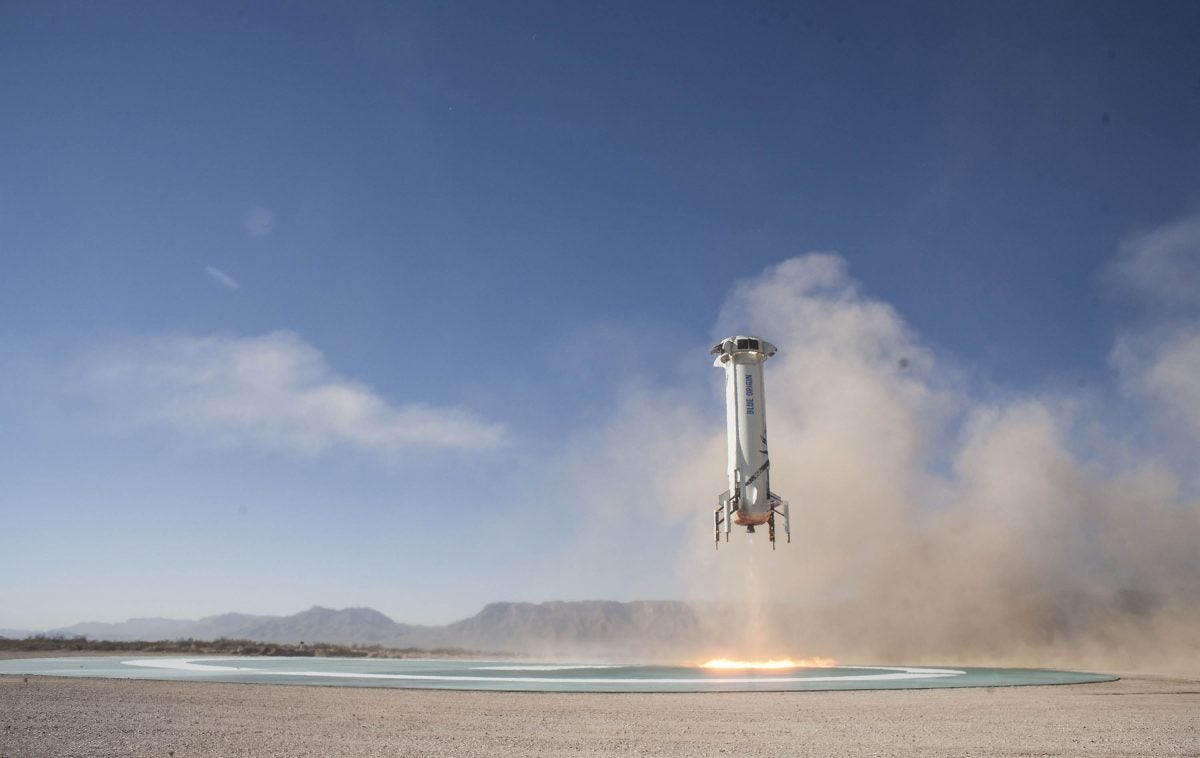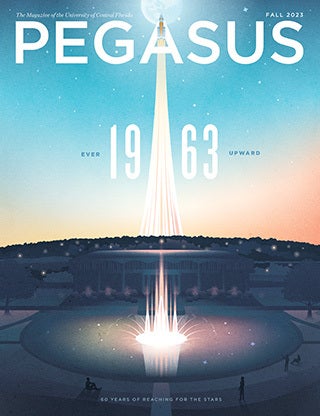Following a successful flight in December, University of Central Florida research launched into space again today, this time thanks to the spaceflight company Blue Origin and NASA’s Flight Opportunities program.
The company’s New Shepard rocket launched from its facility in west Texas carrying research by UCF planetary scientists Joshua Colwell and Adrienne Dove.
“We watched the flight on site from Blue Origin’s viewing area about two miles from the launch pad,” said Colwell, who is director of UCF’s Center for Microgravity Research. “It was a beautiful, clear morning and an exhilarating experience. The landing is as exciting as liftoff. We are now eagerly awaiting return of our payloads.”
The payloads should be available later today, Colwell said.
This is the second time Colwell and Dove have had an experiment fly on the New Shepard rocket, with the first liftoff occurring in 2016. The successful December experiment flew into space on Virgin Galactic’s VSS Unity craft. That launch, from Mojave Air and Space Port, in Mojave, California, marked Virgin Galactic’s first flight into space.
Colwell and Dove were both able to watch the flight from the west Texas site.
“It’s been a long time coming for this payload, and it was so gratifying to see the successful launch and landing.” – UCF planetary scientist Adrienne Dove
“I’m so elated and relieved,” Dove said. “It’s been a long time coming for this payload, and it was so gratifying to see the successful launch and landing. We’re still waiting to get the results back, so there’s still a little bit of nerves and anticipation, but it’s nice to know the vehicle behaved so flawlessly.”
The New Shepard is capable of carrying hundreds of pounds of payloads to altitudes beyond 62 miles, also known as the Karman Line, the internationally recognized boundary of space.
One of the two experiments launched today is known as the Collection of Regolith Experiment, or CORE. It tested a device in microgravity that would be used for sampling regolith from a planetary body, such as an asteroid. Regolith is the loose, unconsolidated material on the surface of the moon, an asteroid or other object in space that doesn’t have an atmosphere.
“It’s a plunger with a scooping mechanism that in microgravity is going to pop down into this simulated asteroid regolith, scoop up some, and pull it back,” Colwell said. “It’s going to grab about a teaspoon full of the material.”
Samples from asteroids could lead to new discoveries about the origins of life and the solar system as well as one day provide valuable metals as part of mining missions.
The other experiment, nicknamed C3BO by the team for COLLIDE-3-Blue Origin, performed three gentle-impact experiments onto a simulated asteroid surface to see how the material responds in a microgravity environment to help understand how to safely operate on the surfaces of small asteroids.
Colwell has now had seven experiments flown into space, including space shuttle flights and payloads to the International Space Station. Dove has had research fly on two Blue Orign flights, one on Virgin and two to the ISS.
The research was funded by NASA, UCF and Space Florida.





